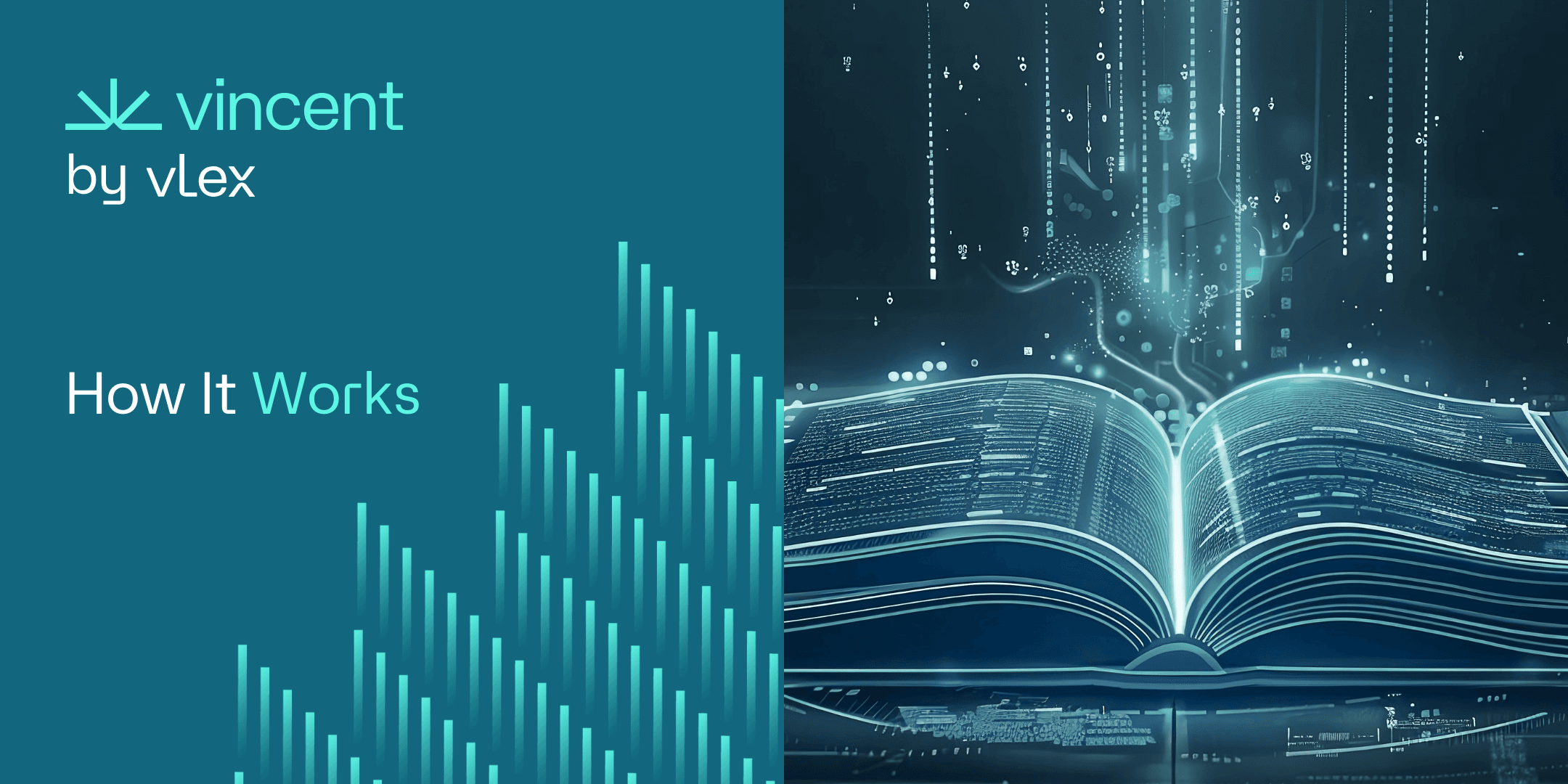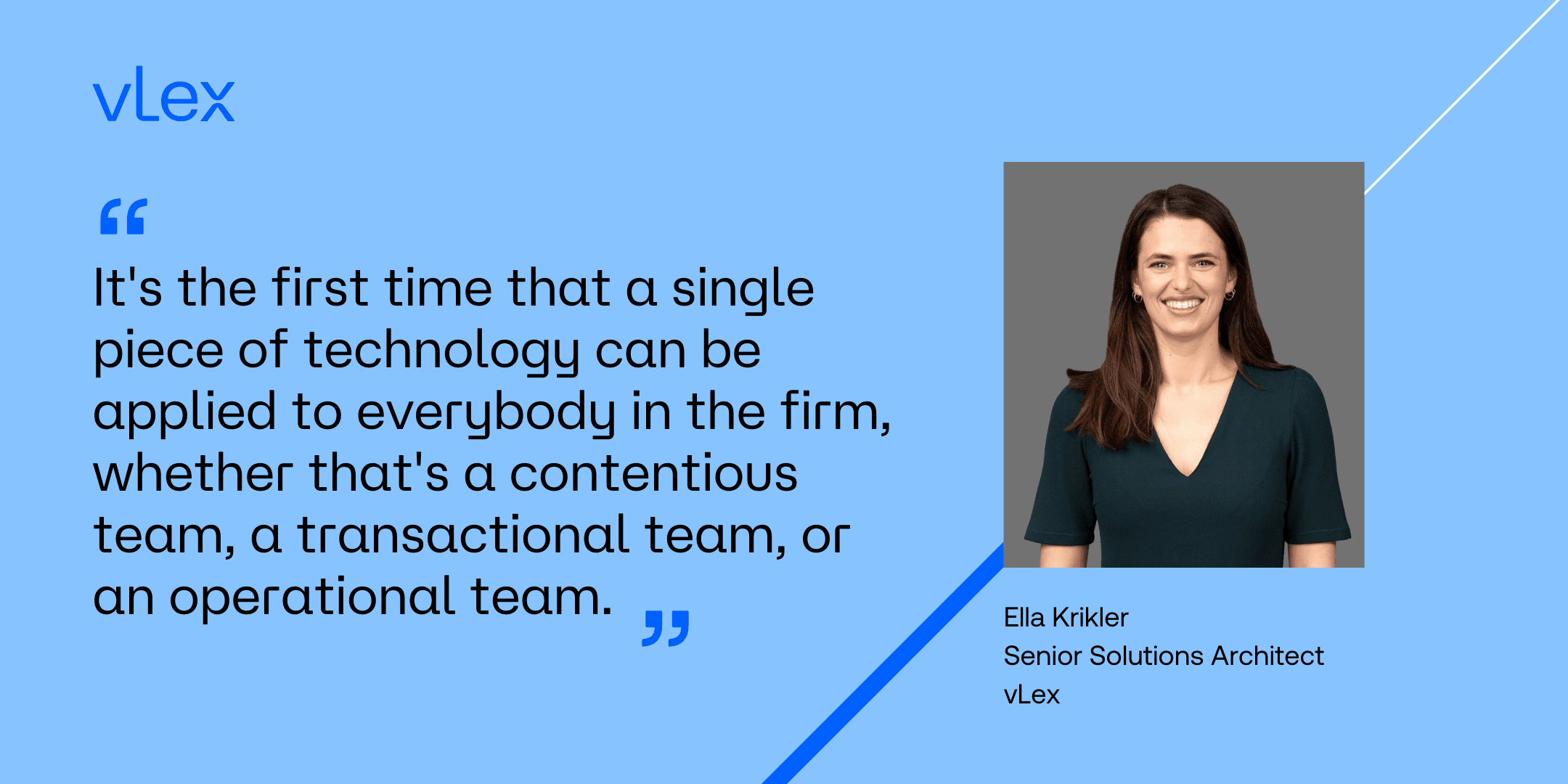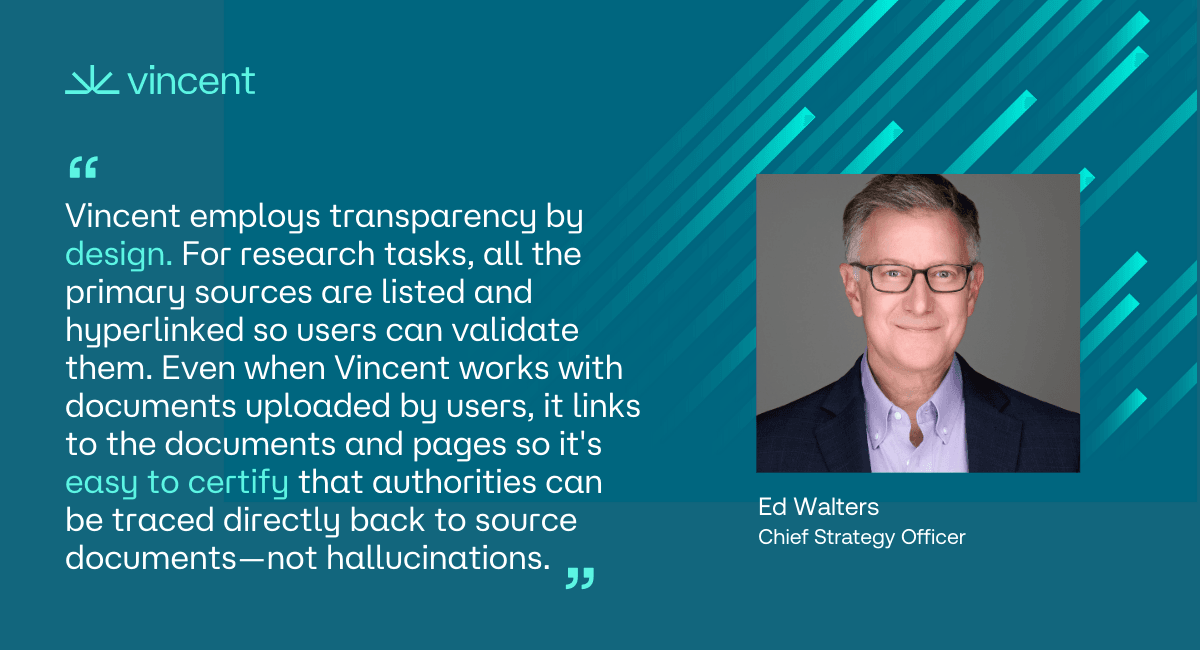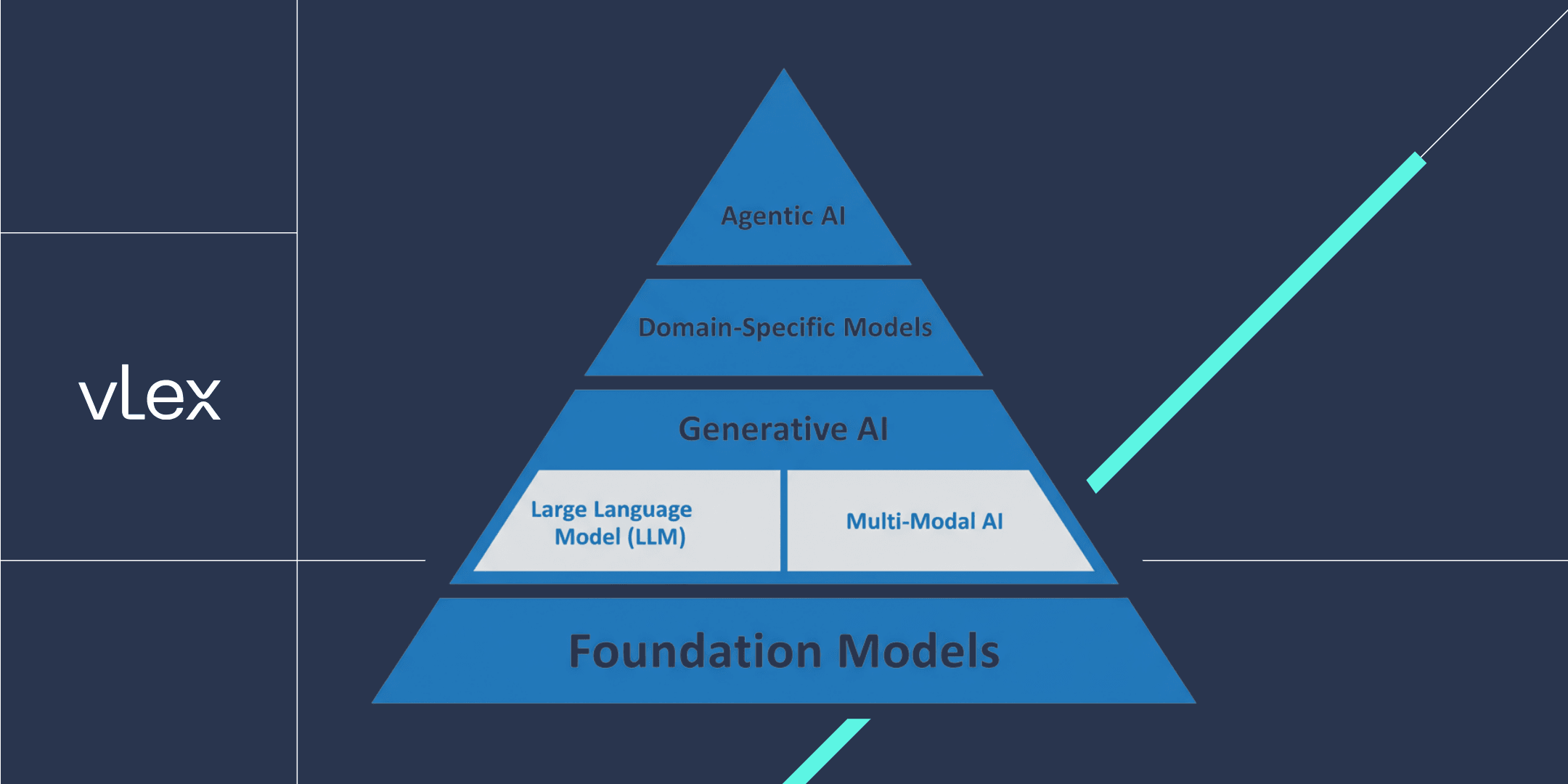How It Works: Generative AI
Generative AI creates new legal analysis instead of just finding existing sources. Learn why competence means understanding GenAI, how RAG can prevent hallucinations, and why domain-specific legal AI platforms outperform general tools for verified research and workflow automation.

Most legal technology helps you find information faster. Generative AI helps you create it. When you ask a traditional legal research tool to find legal precedents, you get a list of existing case law. When you ask generative AI to analyze those same precedents for your client’s specific situation, you get original analysis, tailored arguments, and strategic recommendations—content that didn’t exist until you asked for it.
Under ABA Model Rule 1.1, lawyers must keep up with “the benefits and risks associated with relevant technology” to maintain competence. As generative AI moves from experimental to essential, and as courts begin scrutinizing AI-assisted work product, grasping how these systems generate content becomes a core competency for responsible legal practice.
In our previous How It Works articles, we explored the different types of legal AI and agentic AI capabilities. Today, we’re diving into generative AI—the technology that’s transforming how legal professionals create, analyze, and communicate about legal matters.
What Is Generative AI?
Generative AI (GenAI) creates new content based on patterns learned from training data. Unlike search tools that find existing information, generative AI synthesizes new material by understanding how language, arguments, and concepts work together.
Think of it like this: GenAI is like a composer who has studied thousands of symphonies. Every musical note already exists, but the composer creates new combinations from existing notes. The song is still “new,” just assembled from existing knowledge. In legal practice, GenAI has studied thousands of legal briefs, cases, statutes, and judicial opinions. It can create new legal arguments using familiar legal language and reasoning patterns.
What makes GenAI particularly powerful in legal practice is its universal applicability across different roles and practice areas. As Ella Krikler, Senior Solutions Architect at vLex Labs, explains: “It's the first time that a single piece of technology can be applied to everybody in the firm, whether that's a contentious team, a transactional team, or an operational team.”
This versatility means GenAI can assist with litigation research, contract analysis, compliance reviews, client communications, and administrative tasks—making it valuable not just for attorneys, but for paralegals, legal assistants, and even business operations teams within law firms.

How Generative AI Works in Legal Practice
GenAI transforms legal work by creating tailored content from vast legal knowledge. This technology can produce research memos, analyze complex documents, generate strategic recommendations, and assist with client communications—all while maintaining the analytical rigor that legal work demands.
The Training Process
Understanding how GenAI learns is crucial for using it effectively. General-purpose GenAI tools are trained on vast datasets, including content from the open web, social media, and publicly available documents. While this gives them broad knowledge, it also introduces risks when applied to legal work.
Legal-specific generative AI platforms take a different approach. They’re trained primarily on real legal cases, statutes, regulations, and authoritative legal sources. This focused training helps prevent hallucinations and ensures the AI recognizes patterns in how legal arguments are actually constructed in practice.
The process works similarly to how human lawyers develop expertise. The AI analyzes thousands of successful legal documents, identifies patterns in legal reasoning and argumentation, and learns to apply these patterns to new factual situations—just like a real lawyer does when drawing on their experience and legal education to tackle new cases.
Retrieval Augmented Generation (RAG)
While training gives GenAI its foundational knowledge, Retrieval Augmented Generation enables it to access current information in real-time and ground its answers in a source of truth to reduce the possibility of hallucinations. RAG works by combining the AI’s trained knowledge with live searches of connected databases, ensuring responses include the most up-to-date information.
This is particularly crucial in legal practice, where laws change and new precedents emerge regularly. With RAG, GenAI can provide analysis based on legal developments that occurred after its training was completed, addressing one of the biggest limitations of traditional AI—the knowledge cutoff date. RAG also helps ensure that legal AI platforms, like Vincent, provide the most accurate answers, always grounded in the law.
Multi-modal AI Expansion
As GenAI has continued to develop, it’s no longer limited to text-based processing. Modern GenAI platforms, including Vincent, can process and analyze images, audio, and video files, opening up new possibilities for legal practice.
This multi-modal capability has significant applications in legal work. Legal professionals can now use AI to transcribe and analyze video depositions, review audio recordings of client interviews or meetings, process images within evidence files or exhibits, and analyze documents that contain both text and visual elements like charts, diagrams, or photographs.
For example, multi-modal AI can analyze a contract that includes both text provisions and embedded charts, providing comprehensive analysis of the entire document rather than just the textual elements.
The Critical Importance of Verification
While GenAI offers powerful capabilities, verification remains essential—especially when using general-purpose AI tools. You must always verify every case citation, every quote, and all legal logic in AI-generated content.
Vincent addresses this challenge by making verification straightforward. All legal authorities are hyperlinked, allowing you to click directly into the quoted portion of cited cases. If Vincent cannot find real, authentic legal support for a particular argument, it will explicitly state so rather than fabricating sources.
As Ed Walters, Chief Strategy Officer of vLex and Co-Founder of Fastcase, emphasizes: “Vincent employs transparency by design. For research tasks, all the primary sources are listed and hyperlinked so users can validate them. Even when Vincent works with documents uploaded by users, it links to the documents and pages so it's easy to certify that authorities can be traced directly back to source documents—not hallucinations.”
This transparency becomes even more important when you understand that domain-specific training significantly reduces the chance of fabricating legal authorities. Since a legal-specific AI platform draws from its verified legal database, it’s far less likely to hallucinate non-existent cases because it can’t link back to sources that don’t exist in its legal libraries.

Understanding LLMs and Foundation Models
Large Language Models (LLMs)
Large Language Models represent a specific type of GenAI focused on understanding and generating human language. LLMs teach AI to communicate like humans by analyzing vast amounts of human writing, learning patterns in how we construct sentences, develop arguments, and convey complex ideas.
In the context of legal AI, LLMs provide the core capability for understanding legal language, which has its own unique patterns, terminology, and reasoning structures. This foundation enables AI to engage with legal concepts in ways that feel natural to legal professionals.
Foundation Models
Foundation models are general-purpose AI systems that serve as the base layer for domain-specific applications. These large-scale systems are trained on massive, diverse datasets and provide broad intelligence that more specialized models can build upon.
Think of foundation models as the technological foundation that enables more specialized applications. While they possess impressive general knowledge and reasoning capabilities, they lack the deep expertise and specialized training needed for professional legal work.
How Vincent Combines These Technologies
Vincent represents a domain-specific legal platform that combines multiple AI approaches. Vincent is built on foundation model intelligence but enhanced with comprehensive legal-specific engineering. This includes training on vLex’s global legal database of over one billion documents, optimization for legal workflows and reasoning patterns, and integration with authoritative legal sources and citation verification.
The security considerations are equally important. Legal-specific platforms like Vincent operate with zero data retention policies, ensuring that confidential client information is never stored or used to improve AI models. This protection is essential for maintaining attorney-client privilege and meeting professional obligations.

The GenAI Advantage: Why This Matters Now
Understanding GenAI gives you a decisive competitive edge. While some lawyers remain hesitant about AI adoption, those who master GenAI are completing research faster, analyzing documents more thoroughly, and delivering more comprehensive client service. This efficiency creates a multiplier effect, enabling lawyers to take on more high-value client work.
The question is: Will you be at the forefront of the GenAI revolution, or will you hesitate—and struggle to catch up?
Those who wish to be at the forefront can experience GenAI engineered for legal work by starting their free trial of Vincent today.
Start Your Free Trial of Vincent
Authored by
Sierra Van Allen